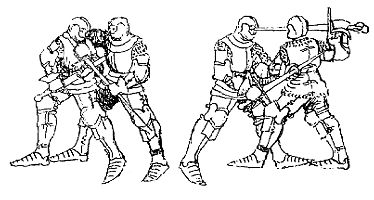
in armis, sine armis, equester et pedester
Fiore dei Liberi
1410
A very nice Italian reprint of this book is currently available. It has the original text and pictures on the right, and on the left the text in a readable typeface, along with comments in modern Italian by Giovanni Rapisardi, who also wrote an introduction. At about 167 pages, this little book contains a treasure of clear technical drawings. I recommend this book to everyone, it is absolutely worth the very reasonable price even if you don't know a word of Italian.
My own knowledge of Italian is almost non-existant, but I get the impression Mr Rapisardi treats the work primarily from the point of view of a modern fencer. But since his book contains the full original, every reader is free to form a personal opinion. I feel every initiative to make such original material available in an accessible publication merits the strongest support.
The techniques in the Flos Duellatorum cover the entire spectrum from unarmed wrestling to mounted swordfighting. Since the author is supposed to have studied in Germany, a comparison with the techniques of the German Hans Talhoffer would seem reasonable. Many of the techniques are similar, yet there are also important differences. Talhoffers FechtBuch starts with the long sword, Flos Duellatorum starts with unarmed combat, followed by dagger fighting. Where Talhoffer seems to focus heavily on the judicial duel with matched weapons, Dei Liberi pays more attention to unequal fights (as would occur in war or self-defence situations). The dagger techniques (my personal favourites) for example, are all against the same weapon in Talhoffers FechtBuch, but in the Flos Duellatorum, these matched techniques are a distinct minority. Dei Liberi shows a lot of unarmed defences against a dagger attack (which look like a cross between Talhoffer and Marozzo's knife disarms in Opera Nova), counters to these defences, and defences with a dagger against a sword or spear attack. Some of Dei Liberi's techniques use a stick apparently picked up as improvised weapon. Only the armored combat has something of an organised duel.
And now, on to the pictures:
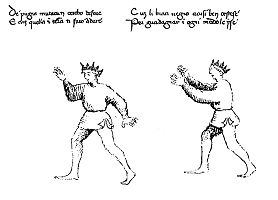
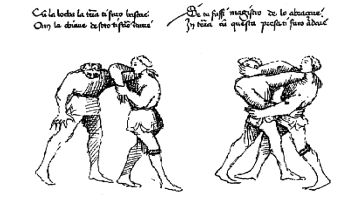
Two postures, and some unarmed techniques. To avoid a lot of empty space
in the pictures, I dropped the text from most of them. Notice that the
"winner" in the drawings is identified by a crown and/or a garter.
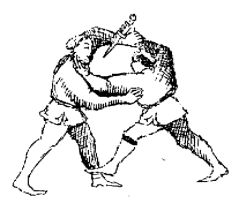
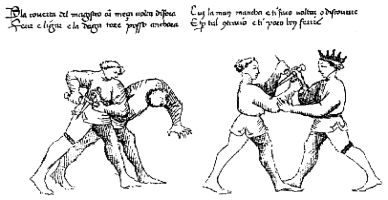
Unarmed defence against dagger attack, and two dagger vs dagger techniques.
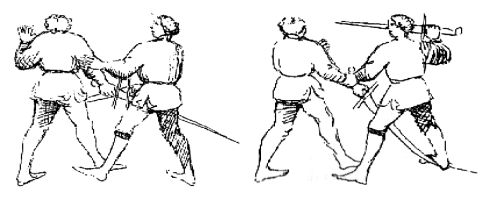
Techniques for the one-handed sword. To me it looks the same as the two-handed
sword... As in Talhoffers FechtBuch, there is a surprising amount of armed
grappling going on.
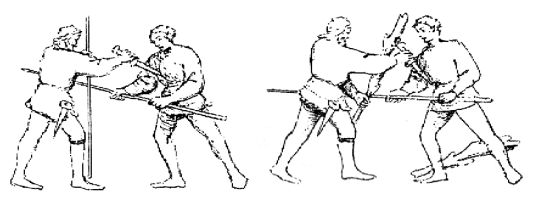
Defence against spear attack with staff and dagger, or with - a small tree?
and a dagger.
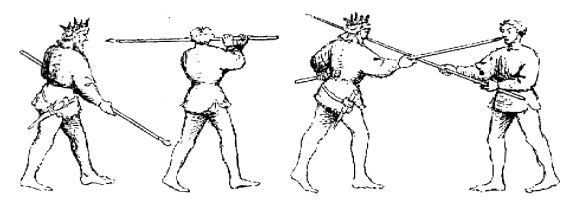
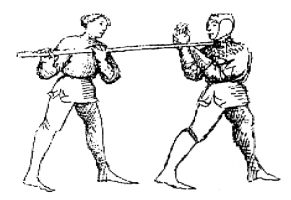
Spear fighting, and unarmed defence against a spear attack.
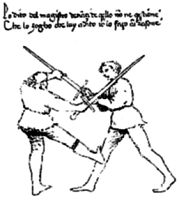
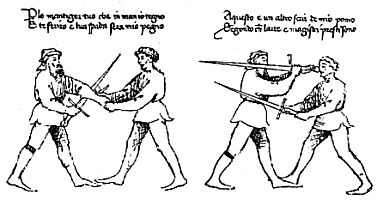
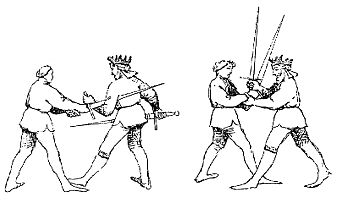
Fighting with the two-hand sword.

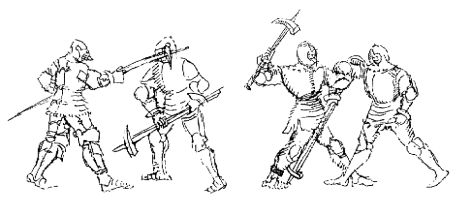
Armoured combat with sword and axe.
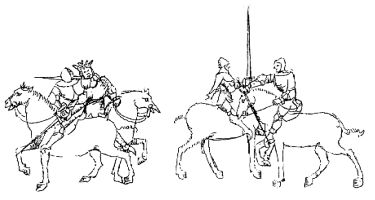
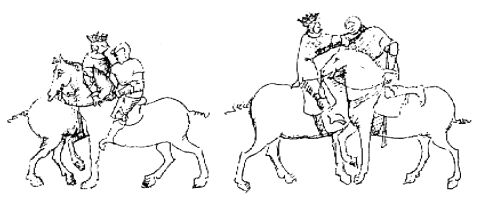
Mounted swordfight, and mounted wrestling (that must be unpleasant falls
to train).
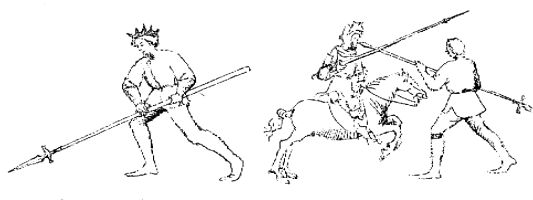
A pedestrian's defence against mounted attack.
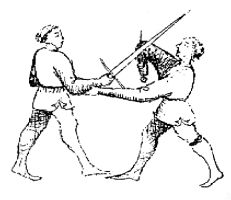
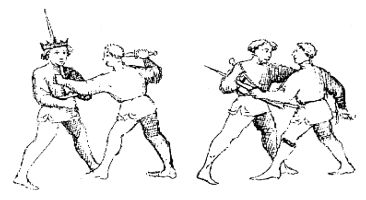
Some streetfighting techniques: a defence with the dagger against a sword
attack, and a defence with sheated sword against surprise dagger attack.
I got my copy of this book from La
Libreria Militare :
Galleria Borella 1
20123 MILANO (Italy)
tel/fax ++39.02.89010725
E-mail: libmil@starfarm.it
They respond prompty to email (in English), accept creditcards and are
friendly and helpful.
